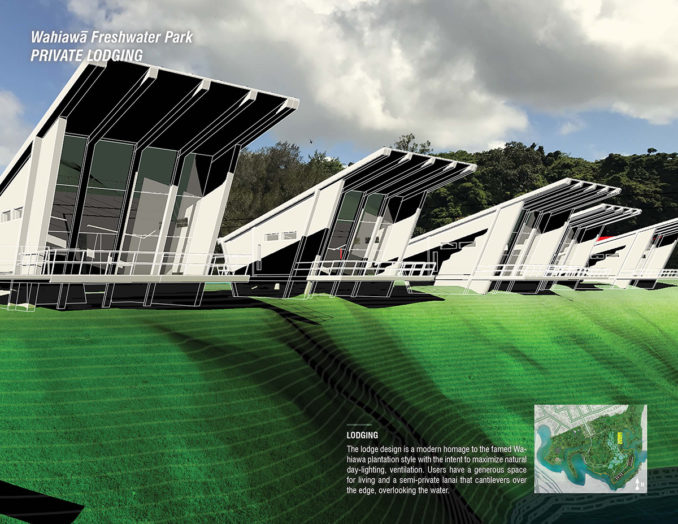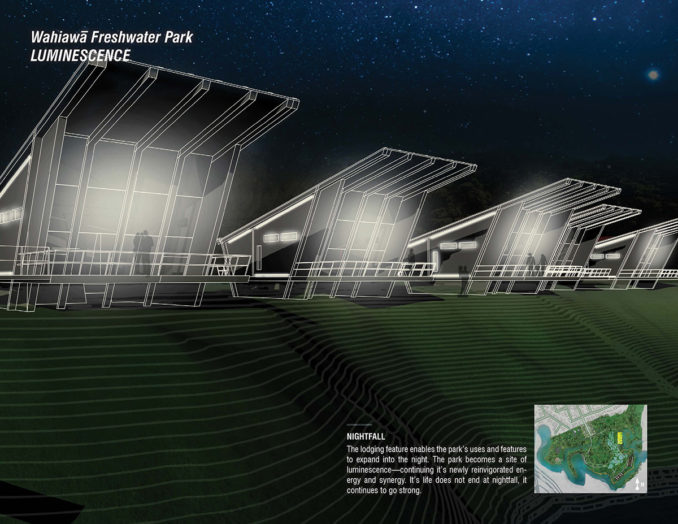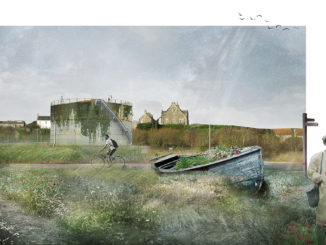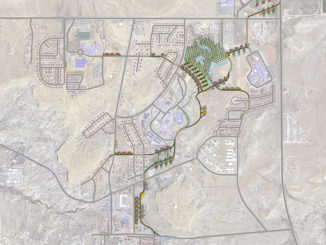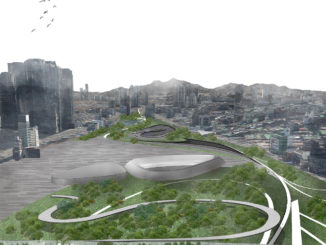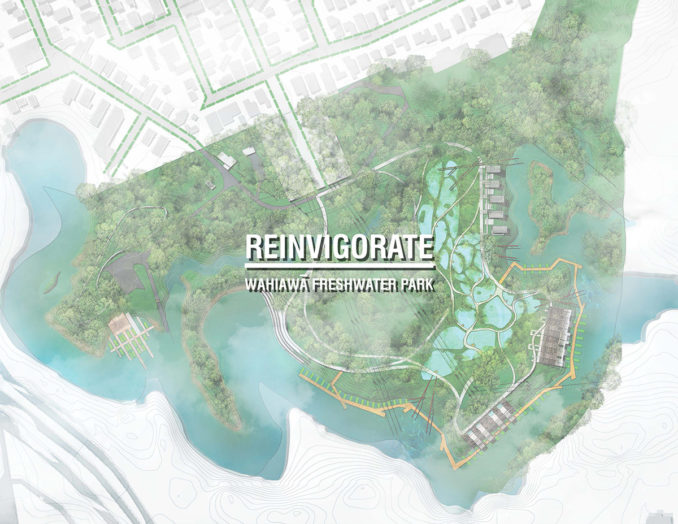
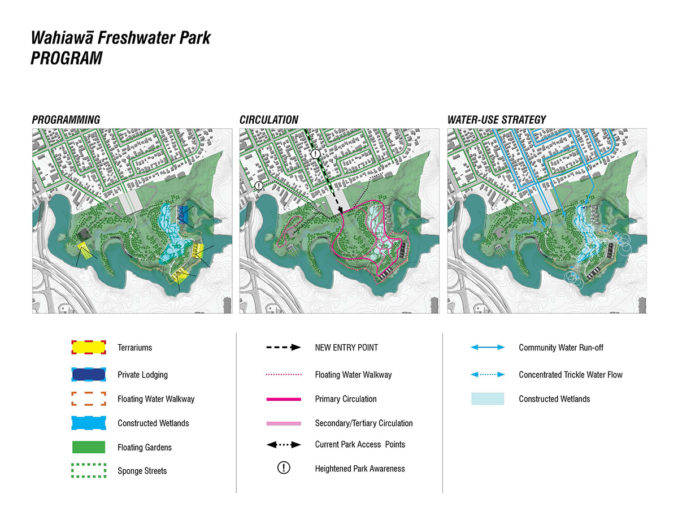
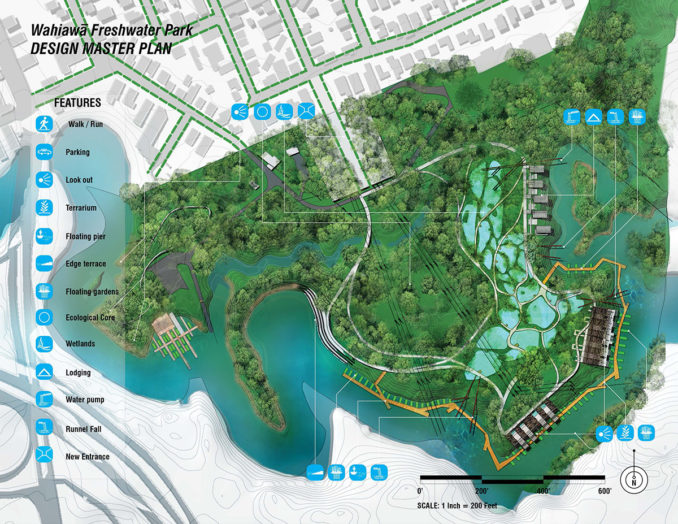
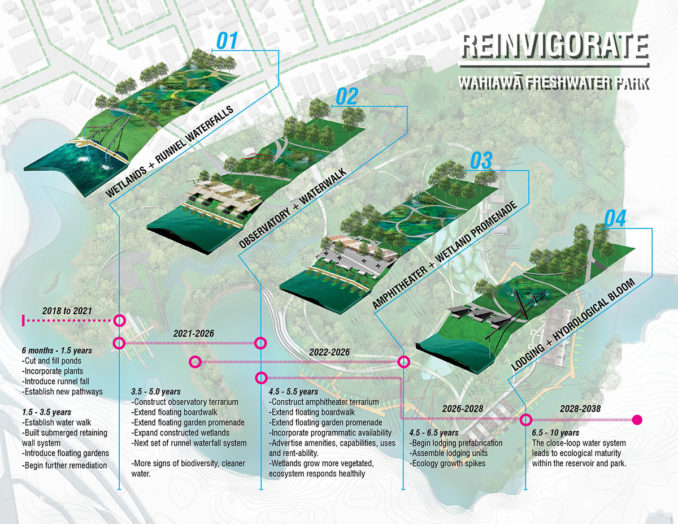
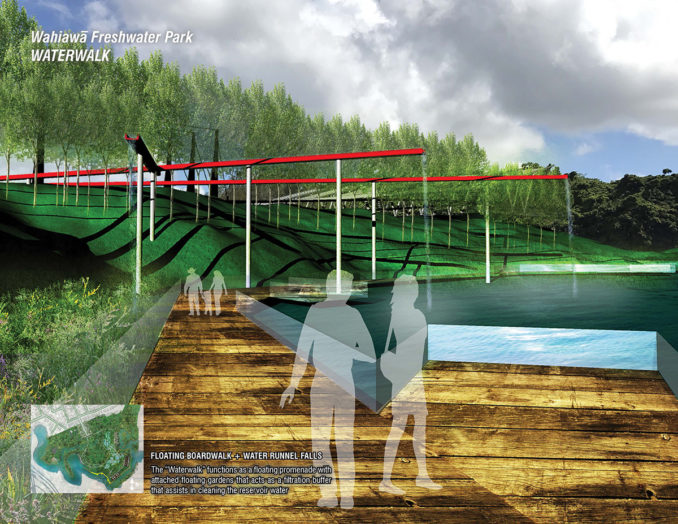
The Wahiawā Freshwater Park was once the core of the town. Today, the park is a place of nostalgia—something that once-was but is no longer. The park was a place where residents would hike, explore, swim, canoe and fish. It is now a subject of fear amongst the locals as homelessness and the water pollution increases. Despite being the largest fresh water reservoir in the state, Wahiawa Freshwater Park is very underutilized, greatly neglect and nearly forgotten. The initiative of REINVIGORATE sees the park as a gem of Wahiawa, capable of new synergy and connectivity between the reservoir and local neighborhood. REINVIGORATE seeks to establish an ecological core within the community by cleaning the reservoir’s water and activating existing site elements: the edge conditions and stagnant water—transforming them into powerful spectacles of beauty. Wahiawā is a place rich in character, history and pride, thus, idea behind reinvigorating is to transform it into a place of opportunity where local citizens can benefit and attract people from all walks of life.
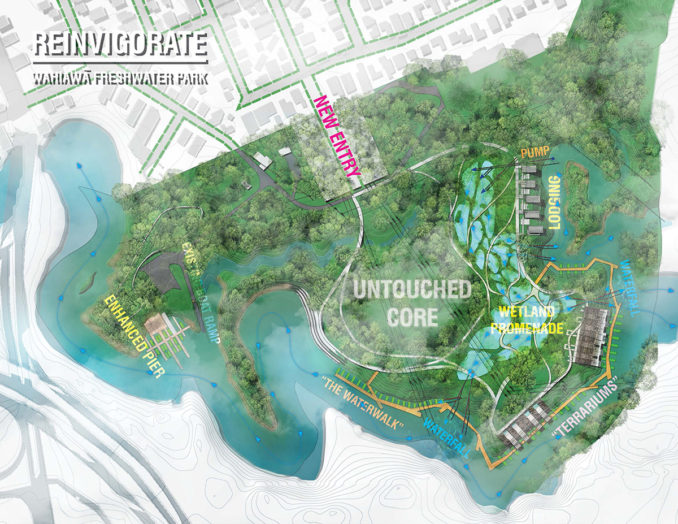
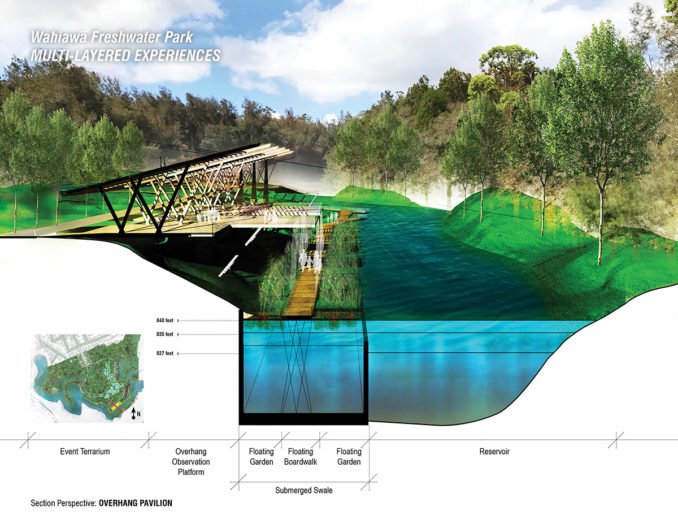
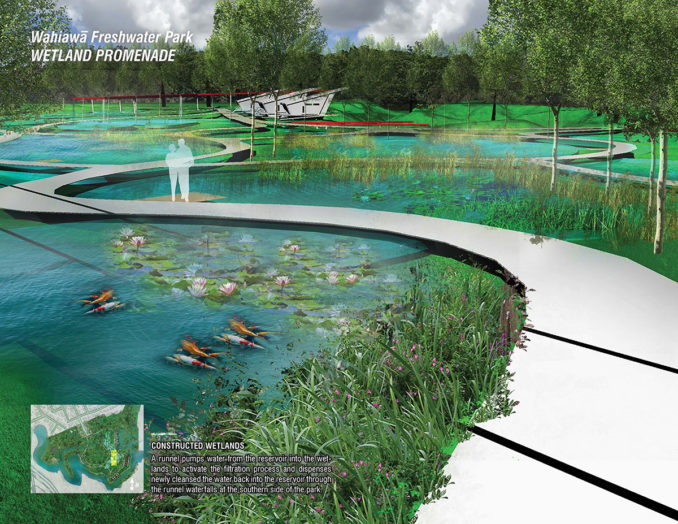
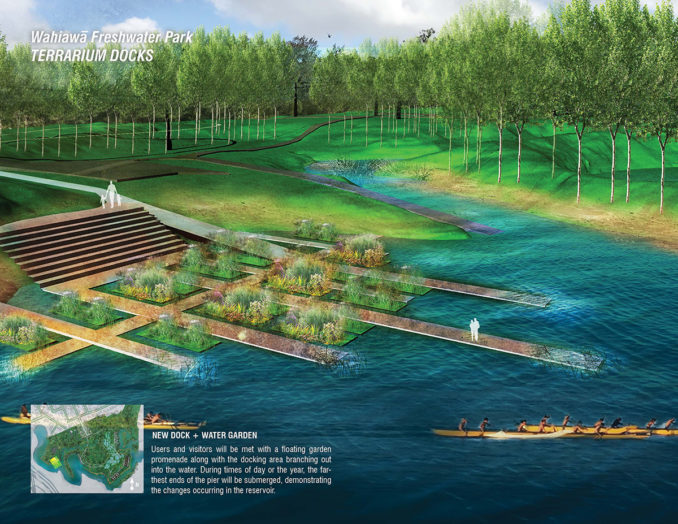
A new neighborhood entry will connect the park with the community. Floatable and walkable piers/gardens will line the edges of the park and activate the water through phyto-remediation. Visitors are met with a floating garden promenade branching out into the water. The boardwalk works as a filtrating buffer, reef culture for fish, and a spectacle for visitors. Runnel waterfalls branch over them—pouring water into the reservoir—aerating it. Small junctures create pauses to display the immensity and preciousness of the reservoir. Water-levels in the reservoir fluctuate between thirteen feet. Submerged beneath the walkway is a swale structure, anchoring the path in place, holding a consistent water-level for the plants as the reservoir lowers, and creating seasonal fish ponds for Koi.
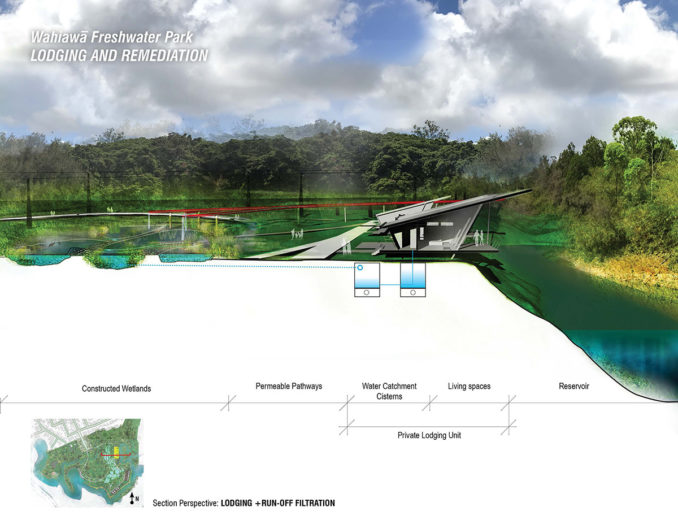
Terrariums are pavilions that accentuate the edges of the reservoir, opening out to the water. The structures are of wooden louvres, enabling natural light, shade and ventilation. Each Terrarium integrates landscape in dynamic ways—the Observatory Terrarium, features an alternating solid-void layout—allowing plants and existing trees to grow in between the structure; the Event Terrarium has planter boxes dividing the space, allowing the existing trees to stay and naturalize the amphitheater experience. Balconies overlook the water—the boardwalk, creating a canopy experience from above and a more intimate water-level experience from below.
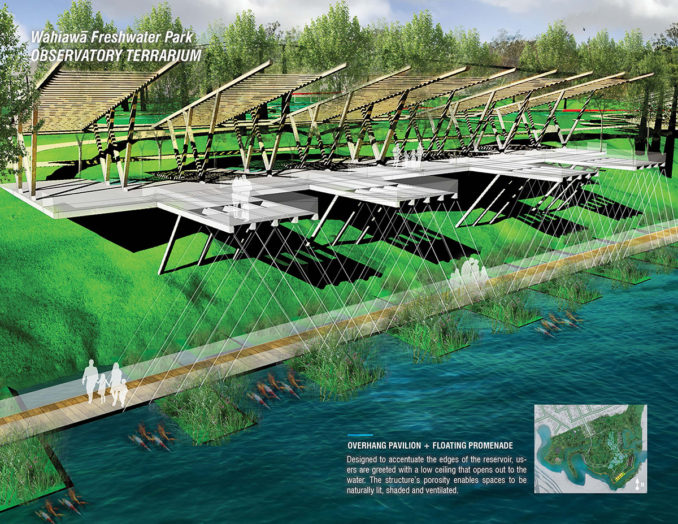
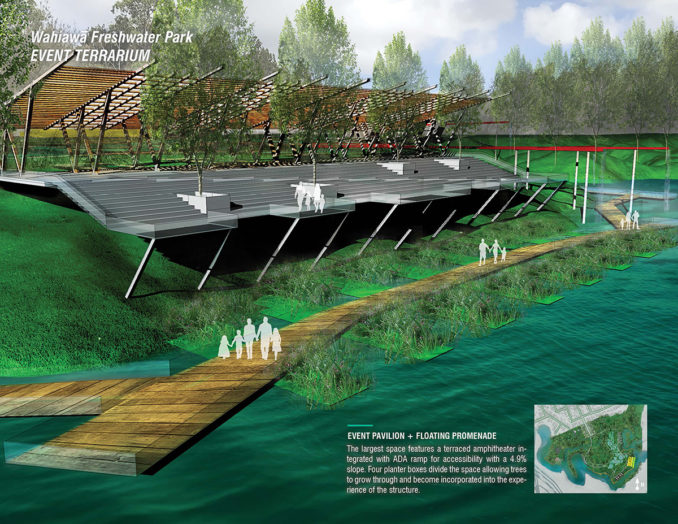
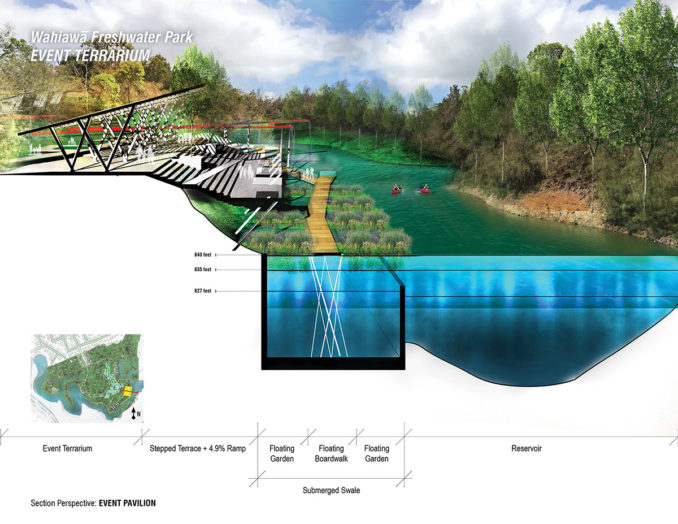
Outfall from the neighborhood and park is channelized into wetland promenade of the park. Vegetation, microbes, biofilm naturally clean the water—increasing biodiversity. The wetlands are supplemented by an anti-gravity pump—pumping reservoir water up into the wetlands. Water is retained, filtrated, repurposed and slowly dispensed back into the reservoir through the waterfalls at the terrarium side—aerating the reservoir. At the end are five plantation-style lodging units to extend one’s stay at the Wahiawā Freshwater Park. Users can decompress with large living and lanai spaces overlooking the water. Each unit captures, filtrates, and distributes gray water into the wetlands for further remediation. Lodging extends the park’s life—becoming a site of luminescence at night.
